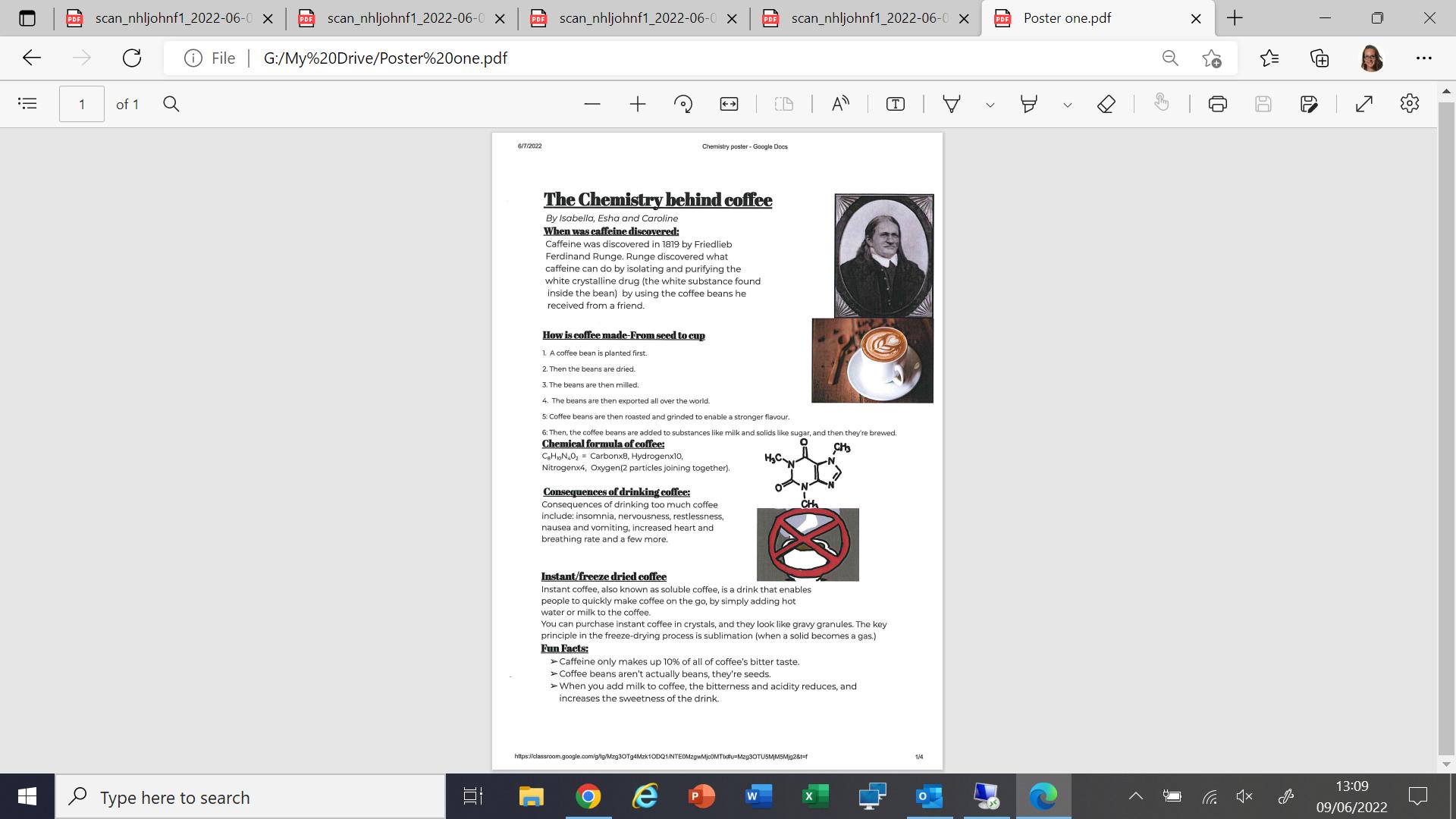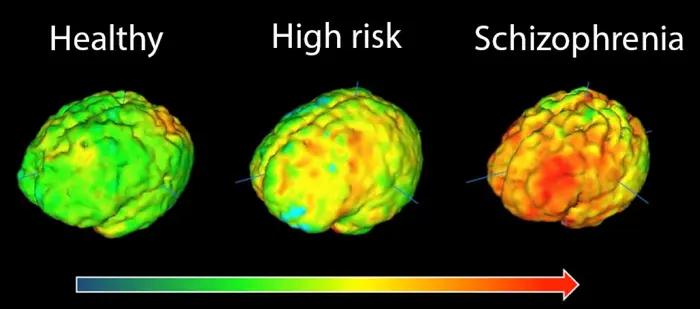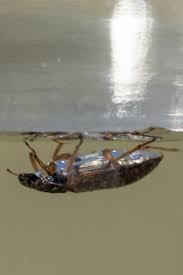Ways in which animals and plants respond to environmental changes
Sia Patel, Year 12
In recent years, the idea of climate change, and its impacts, has become more and more prevalent in our daily lives, with a noticeable increase in extreme weather events and temperatures across the globe Whilst some efforts have been made to reduce its devastating impact, anthropogenic climate change continues to wreak havoc on both animal and plant populations To name just a few examples, accelerated sea level rise, loss of sea ice and temperature increases1 have all caused the destruction of habitats and henceforth the extinction of species. However, climate change has also brought to light the astonishing ways in which both animals and plants can adapt and respond to permanently changed conditions, such as climate.
Recently, it has been discovered that some animal species appear to be changing their phenotype as a response to increased temperatures caused by climate change Protruding appendages such as tails, legs and ears are undergoing morphological changes that allow different levels of heat exchange with their surroundings 2 A study3 published last year outlines the reasons for and effects of the change in size of these features, also referred to as ‘shape-shifting’. The adjustment can be explained by Bergmann's rule, a concept suggesting that, in warm-blooded animals, the ratio of body surface area to weight is correlated with the temperature of its surroundings 4 Essentially, animals living in colder climates are larger and thicker for better conservation of heat Another biologist, Joel Asaph Allen, then expanded on Bergmann’s rule, suggesting that animals living in cold climates have shorter limbs and appendages to decrease their surface area and hence conserve heat.5 Both of these
concepts show that body size, appendage size in particular, plays an important role in heat transfer with the external environment
The process of ‘shape-shifting’ in response to temperature is seen in over 30 species,3 including the increase in size of wings in Chinese roundleaf bats, ears in European rabbits and tails in mice One of the primary examples is the increase in beak size of Australian parrots, with a 4%-10% increase in their beak surface area since 1871. The increase over this period is positively correlated with the summer temperatures of each year that was looked at This provides further evidence that the morphological changes are happening in response to temperatures. However, these adaptations may have unforeseen consequences on the wider natural environment For example, an area that is currently being researched is whether the increase in beak size of birds could impact their feeding behaviours, something that is currently unclear.
An important impact of climate change on plants is increased levels of carbon dioxide in the atmosphere. This, amalgamated with higher temperatures and extreme weather events, causes massive changes in plants’ growth, reproduction, and resilience 6 As a result, plants have developed unique and unprecedented adaptations to overcome these In particular, changes in the phenotypes of plants have occurred in response to sustained changes in temperature
Temperature is one of the most significant external factors that influences the growth and distribution of plant populations. There are a
2
number of physiological changes that occur in certain plant species in response to changes in temperature, such as a shift of the optimum temperature for photosynthesis 7 8 This process is known as the temperature acclimation of photosynthesis, and prevents extreme temperatures from damaging the photosynthetic apparatus of the cell. In many plant species, the changes that occur in response to temperature changes are reversible over a certain range, typically from 10°C to 35°C However, drastically high or low temperatures can have a detrimental effect on the plant’s photosynthetic function It has been seen in most plant species that the optimum temperature can only change by around half of the linked change in the environmental temperature.9 This is an important adaptation that can allow plants to mitigate the effects of changing temperatures on their photosynthetic rate, thus reducing the impact on their growth
There are other responses that plants have exhibited that allow them to diminish the effects that climate change has on growth temperature, including reducing their respiration rates and increasing their total leaf area 10 11 Plants can respond to changes in their external environment through alterations of their genotypes through genetic polymorphism and evolution over time.
A particular species that has exhibited accelerated evolution is a certain variety of Mediterranean thyme (Thymus vulgaris), also called Turkish thyme This species is native to southern Europe, found from the western Mediterranean

to southern Italy Its leaves are used in various ways around the world, such as for the treatment of coughs and bronchitis It has been shown that this variety of thyme contains phenol compounds, which give its leaves antioxidant properties,12 hence explaining their wide medicinal use. These phenols, by producing a strong smell, also play a role in deterring herbivores from consuming the plants However, the production of these phenols means that the plants have a greater susceptibility to freezing
The Saint-Martin-de-Londres basin in France has seen warmer winters than ever before as a result of climate change, meaning that there are fewer times in which the temperature drops below freezing A study13 investigated genetic polymorphism (difference in DNA sequences14) in this species from 1974 to 2010 by looking at the composition of essential oils in the individual plants, in particular the phenolic compounds present These different chemotypes (subspecies of plants with different components in their essential oils) were the expression of a genetic polymorphism The results showed the proportion of plants producing more phenolic compounds was
3
higher in 2010 than 1974, suggesting that there has been a genetic change in the populations as a result of rising temperatures This shows that this species has responded to climate change through a change in its genotype that, essentially, takes advantage of the increased temperatures in the region.
Although many plants and animals have exhibited these adaptations and changes in response to global warming, this does not mean that they are enduring it well and that our efforts to reduce the impacts of climate change should cease Sara Ryding, the author of the study looking into animal ‘shape-shifting’, says, about this process, ‘It just means they are evolving to survive it [climate change] – but we’re not sure what the other ecological consequences of these changes are, or indeed that all species are capable of changing and surviving’
Sources:
1. NASA Global Climate Change. TheEffectsof ClimateChange. Available from: https://climate.nasa.gov/effects/
2. Ashworth, J. Natural History Museum (2021) Animals'shapeshifting'toadapttorising temperatures. Available from: https://www.nhm.ac.uk/discover/news/2021/sept ember/animals-shapeshifting-to-adapt-to-rising-t emperatures.html
3. Ryding, S., Klaassen, M., Tattersall, G.J., Gardner, J.L. and Symonds, M.R.E. (2021) Shape-shifting: changing animal morphologies as a response to climatic warming. Trends in Ecology & Evolution. 36 (11), pp.1036-1048. https://doi.org/10.1016/j.tree.2021.07.006
4. Encyclopedia Britannica (2011) Bergmann’sRule Available from: https://www.britannica.com/science/BergmannsRule
5. Zeldovich, L., Smithsonian Magazine. (2021) AnimalsAreChangingShapetoCopeWithRising Temperatures. Available from: https://www.smithsonianmag.com/science-natur e/animals-are-changing-shape-cope-rising-tempe ratures-180978595/
6. Eisenach, C. (2019) How plants respond to climate change. Plant, Cell and Environment [online]. 42 (9), pp.2537-2539. https://doi.org/10.1111/pce.13604
7. Way, D. A., and Oren, R. (2010). Differential responses to changes in growth temperature between trees from different functional groups and biomes: a review and synthesis of data. Tree physiology. 30(6), pp.669–688. https://doi.org/10.1093/treephys/tpq015
8. Crous, K. Y., Quentin, A. G., Lin, Y. S., Medlyn, B. E., Williams, D. G., Barton, C. V., and Ellsworth, D. S. (2013). Photosynthesis of temperate Eucalyptus globulus trees outside their native range has limited adjustment to elevated CO2 and climate warming. Globalchangebiology 19(12), pp.3790–3807. https://doi.org/10.1111/gcb.12314
9. Berry, J. and Bjorkman, O. (1980) Photosynthetic Response and Adaptation to Temperature in Higher Plants. AnnualReviewofPlantPhysiology 31.
10. Atkin, O. K., and Tjoelker, M. G. (2003). Thermal acclimation and the dynamic response of plant respiration to temperature. Trendsinplant science, 8(7), 343–351. https://doi.org/10.1016/S1360-1385(03)00136-5
11. Way, D. A., & Oren, R. (2010). Differential responses to changes in growth temperature between trees from different functional groups and biomes: a review and synthesis of data. Treephysiology 30(6), 669–688. https://doi.org/10.1093/treephys/tpq015
12. Köksal, E., Bursal, E., Gülçin, I., Korkmaz, M., Çağlayan, C., Gören, A.C. and Alwasel, S.H. (2017) Antioxidant activity and polyphenol content of Turkish thyme (Thymus vulgaris) monitored by liquid chromatography and tandem mass spectrometry InternationalJournalofFood Properties. 20:3, 514-525, doi:10.1080/10942912.2016.1168438
13. Thompson, J., Charpentier, A., Bouguet, G., Charmasson, F., Roset, S., Buatois, B., Vernet, P., and Gouyon, P. H. (2013). Evolution of a genetic polymorphism with climate change in a Mediterranean landscape. Proceedingsofthe NationalAcademyofSciencesoftheUnitedStates ofAmerica. 110(8), 2893–2897. https://doi.org/10.1073/pnas.1215833110
14. Ismail, S. and Essawi, M. (2012) Genetic polymorphism studies in humans. MiddleEast JournalofMedicalGenetics.1 (2), pp.57-63. doi:10.1097/01.MXE.0000415225.85003.47
4


6
Do parallel universes exist and if so, how do we access the others?
Ishita Nadipalli, Year 9
Parallel universes are a topic widely covered in science fiction and television, but are they rooted in something a lot more real? It is difficult to comprehend how there could be universes out there almost identical to ours but just out of reach, but they could be more scientifically possible than you think.
What is a parallel universe?
A parallel universe is an entirely separate and independent universe that exists alongside our own with no effect on others. There are four possibilities of parallel universes: the first being the Quilted Universe Theory - this explains that there is an infinite space known as the universe where matter in every conceivable arrangement occurs somewhere, meaning that there could be planets and civilisations identical to ours out there The second type of parallel universe is explained by a theory that universes pop up as independent bubbles of space and time with possibly different versions of our laws of physics. The third type of parallel universe is the one most commonly depicted in films and suggests that there are universes in separate realities carrying out every possible different result of every event, so there could be another universe out there where the only difference to ours is what you had for breakfast one morning. The fourth and final type of parallel universe is the one where the laws of physics in that universe are completely different to our own and could directly contradict ours.
Are parallel universes anything like the films?
One aspect of parallel universes which is often ignored in the media is the incredibly low chance of there being life in the other universes The perfect balance of gravity and conditions found in our universe that allow for life and planets and solar systems is a complete
coincidence and it is highly unlikely that other universes would be lucky enough to find that precise equilibrium That means that if other universes exist, they probably won’t look anything like ours, contrary to the multiverses in film which are always very similar to each other. Another aspect that films get wildly wrong is how difficult it is to travel beyond our own universe It would require moving at speeds faster than time or even travelling through wormholes, which haven’t been proved to exist yet.
What proof is there for parallel universes?
There is very little evidence that shows that parallel universes exist for certain as it is extremely hard to prove the existence of something outside our own universe and range of observation However, in 2016 a group of scientists in Antarctica conducting the ANITA (ANtarctic Impulsive Transient Antenna) experiment received some anomalous data which, while it is a stretch, could be explained by the parallel universe theory The ANITA experiment is a NASA-run programme involving a large balloon and an antenna pointed towards Earth which detects the radio waves emitted from extremely rare high-energy neutrinos colliding with atoms within the ice The anomaly ANITA detected was signals from neutrinos shooting upwards out of the surface of the Earth with no known source and they

9
detected these signals on three occasions This directly breaks CPT symmetry (Charge, Parity and Time reversal symmetry) laws which everything in the universe must obey The only explanation for this blatant disregard for the most fundamental laws of our universe is that the neutrinos were from a parallel universe which exists alongside ours where everything is reversed, including time However, this theory is not backed up by any other evidence and is widely considered by scientists to be incorrect
How could we travel to other universes?
Our universe is constantly expanding at a rate faster than the speed of light so getting to another world within our universe like in the quilted universe theory would mean moving faster than light beyond the particle horizon, the maximum distance light could have travelled since the universe existed Currently we have no method of travelling that fast nor do we have a large enough source of energy to power the journey so it is highly unlikely we will ever be able to travel far enough through our universe to reach other worlds If universes followed the
bubble universe theory then it could be possible to overcome the issue of the universe expanding and moving away from others by travelling back in time to a point where our universe was smaller and close enough to another that we could travel there Sadly, time travel is also very difficult and yet to be done successfully.

Overall, while it is fun to hypothesise about parallel universes existing like on television it is highly unlikely we will ever see certain proof of their existence nor will we be able to communicate with them. However, that doesn’t mean there isn’t a world out there identical to ours with someone just like you on it
Sources:
futurism.com/parallel-universes
forbes.com/sites/startswithabang/2020/05/22/ask-ethan-h ave-we-finally-found-evidence-for-a-parallel-universe space.com/32728-parallel-universes.html https://www.thoughtco.com/types-of-parallel-universes-2 698854
nationalgeographic.com/science/article/what-is-the-multi verse medium.com/whiteboard-to-infinity/can-we-reach-otheruniverses-cf90afcf2ab4
10












